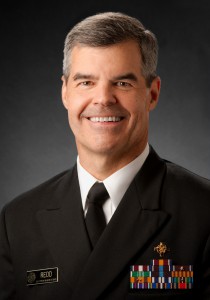Looking Back: 5 Big Lessons from 2016
Posted on by

CDC is always there – before, during, and after emergencies – and 2016 was no exception. Through it all, we’ve brought you the best and latest science-based information on being prepared and staying safe. Here’s a look back at 5 big lessons from a very eventful year. Follow the links to discover the full stories!
1. Expect the unexpected
Emergencies can devastate a single area, as we saw with Hurricane Matthew, or span the globe, like Zika virus. This year has shown us, once again, that we can’t predict the next disaster.
Zika virus was one of the top public health stories of 2016, and will continue to make headlines in 2017. CDC has worked hard since the start of the outbreak to make sure that people know how Zika is spread and how to protect themselves and their neighbors from the virus, including how to control mosquitos inside and outside the home.
This year, our Strategic National Stockpile was called on to locate and purchase the products to assemble ~25,000 Zika Prevention Kits for pregnant women in the U.S. territories. CDC also issued 180 Zika virus import permits so scientists could conduct research to develop better diagnostic tests, vaccine, and medicines. In any developing crisis, our mission is always to “conduct critical science to inform and communicate health information that protects our nation” against public health threats.
2. A health threat anywhere is a threat everywhere
Diseases like SARS and Ebola – and now Zika – compel us to focus on stopping outbreaks early and close to the source. As part of the Global Health Security Agenda, teams of international experts travel to countries, including the U.S., to report on how well their public health systems are working to prevent, detect, and respond to outbreaks. This assessment process is called the Joint External Evaluation.
In 2016, we worked at home and around the world to use the law to prepare for global health emergencies, train leaders from 25 countries in public health emergency management, and protect the health of those affected by humanitarian crises.
3. Kids and communities matter

There’s a saying in emergency management that goes something like, “emergencies begin and end locally.” Truer words were never spoken. The minutes, hours, and days immediately following a disaster are the most critical for saving lives, and local communities are our first responders. Every community needs to be resilient and prepared to handle the unexpected.
Prepared communities look like the Georgia Department of Public Health, which conducted a statewide exercise to practice their response to a bioterrorist attack of plague, and New York City, which used lessons learned from West Nile virus to prepare for Zika.
Children are a particularly vulnerable part of our communities, and they have different needs than adults. Children need to be included and involved in planning and preparing for emergencies.
Fred the Preparedness Dog sets a great example by visiting schools across Kansas to teach kids to get a kit, make a plan, and be informed. Parents should also take steps to prepare themselves and their child in case they get separated during or after an emergency.
4. Words save lives
In an emergency, the right message at the right time from the right person can save lives. When a crisis hits, communicators need to quickly and clearly inform people about health and safety threats. Communication is especially critical when disaster strikes suddenly and people need to take action right away, as in a flood or hurricane, or when we may not yet have all the answers, as happened with Zika virus.
To make sure people know what to do to protect their health, our trained communicators learn how to put themselves in others’ shoes: Who are the people receiving the message, what do they need to know, and how do they get information? We apply the principles of Crisis and Emergency Risk Communication in every emergency response.
5. Preparedness starts with you
Get a flu shot. Wash your hands. Make a kit. Be careful in winter weather. Prepare for your holidays. Be aware of natural disasters or circulating illnesses that may affect you or those you care about.
There are many ways to prepare, and in 2016 we provided the latest science and information to empower every one of us to take action. Whether we talked about how to clean mold from a flooded home, how to wash your hands the right way, or how to use your brain in emergencies, our timely tips and advice put the power of preparedness in your hands. What you do with it is up to you. Our hope is that you’ll resolve to be better prepared in 2017.
2 comments on “Looking Back: 5 Big Lessons from 2016”
Comments listed below are posted by individuals not associated with CDC, unless otherwise stated. These comments do not represent the official views of CDC, and CDC does not guarantee that any information posted by individuals on this site is correct, and disclaims any liability for any loss or damage resulting from reliance on any such information. Read more about our comment policy ».




Thank you for these great information.
Dr ALI Best Regards
I think that words do save lives. That is why I have been asking that we be offered free training in the language we predominantly serve, Spanish, for instance. As a possible team leader in emergency response, my being able to say a directive in another language may save a life. I hope one day that those who serve the public will be given the opportunity to learn to communicate appropriately so that who we can serve can understand. In an emergency there is no “Language Line.” Currently I learn only from going to a bilingual store (supermarket, Target) about Spanish–not from my job.